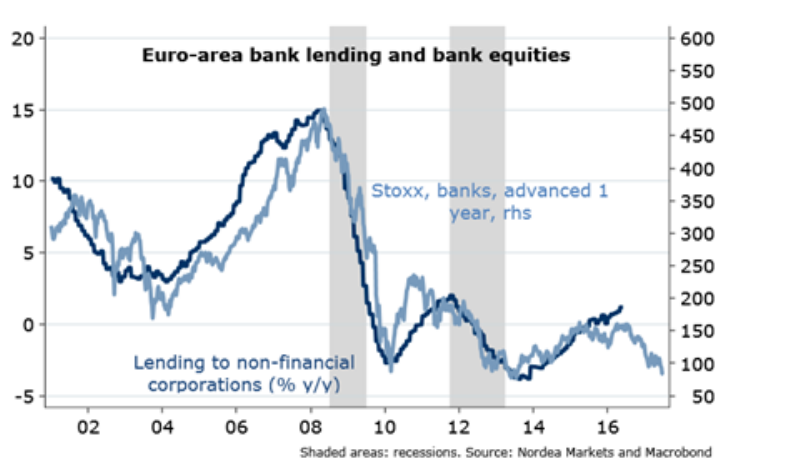Euro to US Dollar Targeting 1.0861 in Run up to European Central Bank Meeting
After breaking below a key channel line the euro looks vulnerable to more downside, and indeed it is currently falling in the run up to the ECB central bank meeting on Thursday

The EUR/USD chart is showing a bearish downtrend generating after the pair breached the lower channel line of a multi-month rising channel.
It is now expected to continue going lower until it hits at least the minimum target at 1.0861.
The breakout generated a bearish target equal to the height of the channel extrapolated lower from the point of the break, which gives an eventual downside target at 1.0750 – which has not yet been reached.
A move below 1.0999 has already confirmed the onset of more downisde.
A further break below the 1.0909 Brexit spike lows, would add further confirmation
The first target lies at the S1 monthly pivot at 1.0861.
The S1 is expected to be an impediment to more downside as traders use the level as a reference point to enter counter-trend orders, trading the ‘bounce’, so trends almost always stall or pause at monthly pivots.
Eventually, however, the rate will probably break through and fall to 1.0750 - its final destination.
Commerzbank's technical analyst Karen Jones, also notes the channel breakout, and likewise is bearish:
"The previous channel - now located at 1.1215, is acting as nearby resistance and maintains our negative bias. It leaves the market
eyeing 1.0821, the March low, and then the 31-year support line at 1.0642." She comments.
Data out in week ahead
The main event for the euro to US Dollar pair in the week ahead is the European Central Bank (ECB) interest rate meeting on Thursday July 21.
No change in policy is expected, but analysts, such as Nordea Bank’s Holger Sandte, think that there is a chance the ECB may change its monetary policy ‘settings’’.
The fallout from Brexit has resulted in a larger share of German Bund yields falling below the minimum acceptable level for the ECB to consider buying them, and this now means that the ECB’s bond purchase programme will run out of bonds to buy by the end of the year, instead of March 2017 as previously expected.
There is therefore a possibility the ECB could relax the rules, particularly that it can only buy bonds with yields above the -0.4% deposit rate.
This is unlikely to move the euro spectacularly, however.
What would possibly hit the euro would be early signs Brexit was damaging the Eurozone economy more than expected, however, it is probably too early for Draghi and his team to be able to assess that.
Nordea's Sandte observes that there is a close correlation between bank lending and bank share prices, and so given the extreme sell-off in Eurozone bank shares post-Brexit, this could indicate a commensurate fall in lending.
Lack of lending has been a major problem besetting the recovery in Europea and so a further fall in it would be highly detrimental to the economy of the region:
“The renewed underperformance of bank stocks returned the difficulties of the sector back in focus. In fact, if bank lending follows bank stock prices as traditionally has been the case, the Euro area could be in for a recession (see first chart). So the banking problem needs to be addressed.” Writes Sandte.
Impact of Nice Terrorist Attack
Following the horrific terrorist attack in Nice, in which 84 people died, there may be calls for tougher border controls and immigration in France, which appears to be becoming a favoured target by terrorists.
Whilst it is a bit morbid to conjecture - the event may increase the popularity for far right nationalist parties, providing another threat to the ‘Euro project’ which could weigh on the single currency, especially given the already widespread mood of nationalism and protectionism currently pervading the region, and the recent UK referendum result.
Banking Crisis
Italian banks are another major concern for investors with talk of them reaching crisis point.
The EU seems to have compromised a little after intially preventing the Italian government from bailing banks out directly.
Now one of the worst hit lenders Banco Monte dei Paschi di Siena is said to have recieved, or is about to recieve state aid.
Nevertheless, the other banks are unlikely to recieve the same treatment, which leaves the question as to who will take the 'hit'.
Overall, fears are probably a little overdone, according to Erik Nielsen, Global Chief Economist at Italian lender UniCredit, who clarifies the misapprehension that Italian banks are on the point of folding in a recent note:
“As far as we know, the banks under consideration in Italy are not insolvent. The problem is the capitalization level under stress tests. This may require precautionary recapitalization (this is consistent with Article 32 (4) (d) in Banking Recovery and Resolution Directive (BRRD)).”
If creditors are expected to bear the brunt of the recapitalization requirement then only certain creditors will be obliged to take a write-down or other deal, not all debt holders.
Data from the US
US data releases in the week ahead will be viewed in a large part in relation to their impact on whether they will increase or diminish the likelihood of an early interest rate hike from the Federal Reserve (Fed).
Clearly an earlier rise will support the US Dollar as currencies with higher yields tend to generate higher demand from international investors seeking higher returns than currencies with lower rates.
Philadelphia Fed Manufacturing in July is out on Thursday and is expected to register a 5 from 4.7 previously.
Existing Home Sales in June, also on Thursday, is expected to show a slide to 5.47m.






